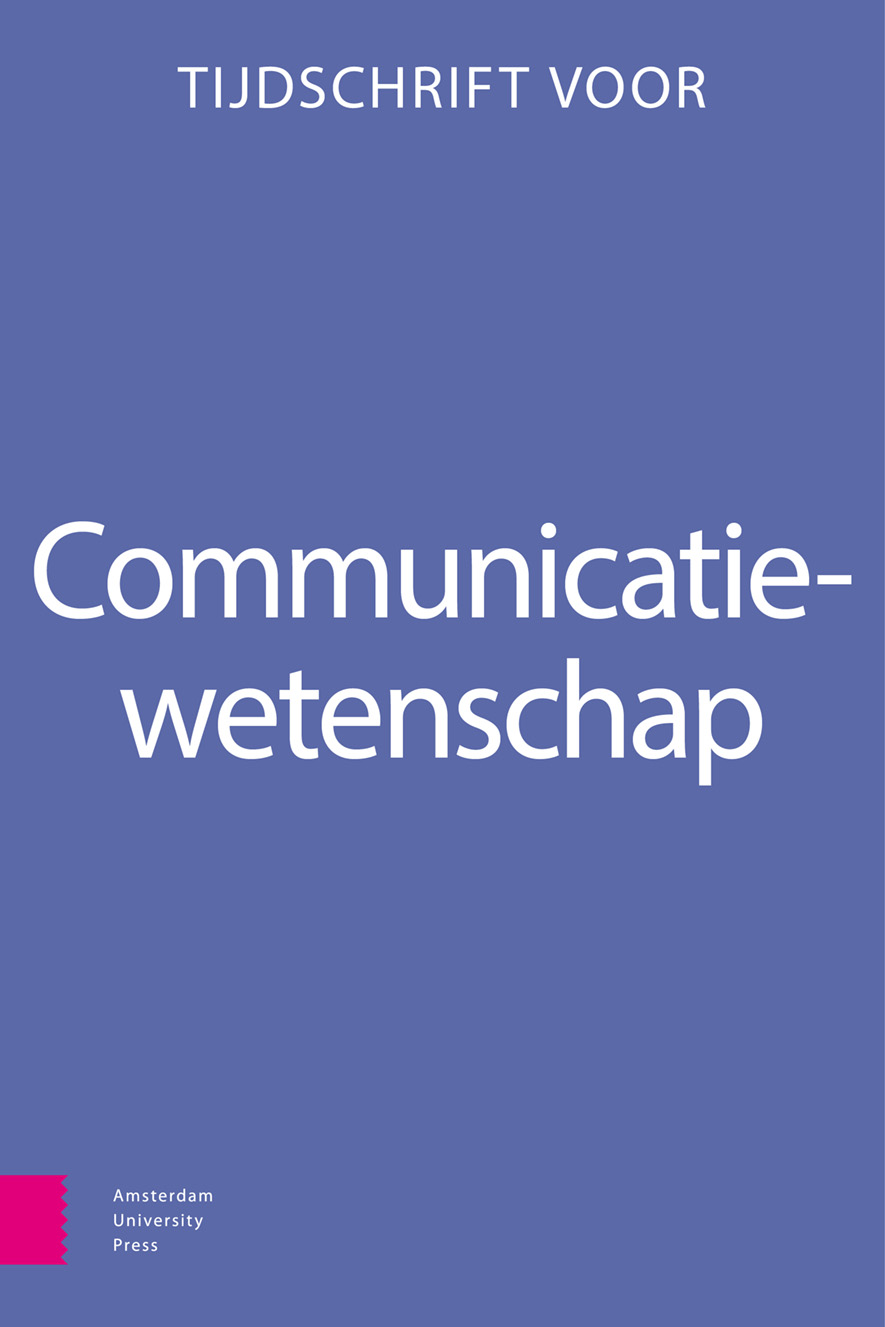- Home
- A-Z Publications
- Tijdschrift voor Communicatiewetenschap
- Previous Issues
- Volume 49, Issue 2, 2021
Tijdschrift voor Communicatiewetenschap - Volume 49, Issue 2, 2021
Volume 49, Issue 2, 2021
-
-
Snow Fall in de polder
More LessAuthors: Renée van der Nat, Piet Bakker & Eggo MüllerAbstractSnow Fall in the polder. Interactive multimedia productions in Dutch journalism
Interactive multimedia productions are a recent journalistic format. The format has been studied in the Anglo-Saxon context as digital longform and interactive documentary. Research has consequently focused on English language productions. This article presents an overview of these types of productions created in the Netherlands and also proposes an analytical apparatus and conceptualization that does justice to the main properties of this new genre; multimediality and interactivity. The results show that this journalistic form is mainly produced by established national newsrooms. Furthermore, the potential of digital media is used sparsely. Despite the use of complex narrative structures like multi-linear and non-linear stories, familiar media forms are used. Interactive features are mostly utilized to provide additional information to users.
-
-
-
Het promoten van gezonde voeding met behulp van vlogs
More LessAuthors: Annelijn Mäkel, Frans Folkvord & Paul NelissenAbstractThe promotion of healthy food with the use of vlogs
Numerous studies have consistently shown that children do not consume the recommended amount of fruit and vegetables to grow up healthily. The aim of this research was to discover if, and how, vlogs can contribute as a health promotion strategy. A qualitative study with 25 interviews including experts, marketeers, parents and teachers was conducted. Participants were benevolent to promote fruit and vegetables through vlogs. Vlogs have the power to contribute inspiration, motivation, information, and activation to stimulate fruit and vegetables consumption among young children. To develop the vlogs, co-creation with children in the target group is considered to be necessary. In general, the use of vlogs to stimulate fruit and vegetable consumption seems promising.
-
-
-
Representatie van sekswerk in Nederland: een vergelijking tussen Jojanneke in de prostitutie en Filemon op de Wallen
More LessAuthors: Linda Duits & Floor BoschhuizenAbstractRepresentation of sex work in the Netherlands: a comparison between Jojanneke in de prostitutie and Filemon op de Wallen
Since 1999, sex work in the Netherlands has been partly legalized. Despite a reputation of tolerance, Dutch media represent sex workers as victims, opening the door to more restrictive policy. In this article, we report on a discourse analysis of two documentary series, Jojanneke in the prostitution (2015) and Filemon in the Red Light District (2017). We show that stigmatizing discourses dominate the former: sex work is brought as a gruesome, criminal practice, that even as a chosen profession is unattractive, where Dutch natives and escorts are the exception to the rule and where women lack agency. The latter title is more ambivalent. Discourses of sex work as work dominate, but it also emphasizes that sex work is an unattractive profession where Eastern-European workers are naive victims and that is inextricably related to crime. Recommendations for journalists to counter stigma are made.
-
-
-
Vijf grote uitdagingen in de wetenschapscommunicatie
More LessAbstractFive major challenges in science communication
This article gives an overview of five major challenges in the field of science communication – with a focus on the Dutch/Flemish situation and the role that communication scientists can play in tackling these challenges.
- The research field is fragmented and the balance between the practical and academic aspects of science communication can be improved.
- In policies there is a large emphasis on informing society, whilst science communication should also be a dialogue with society.
- Connecting with society is the third mission of universities, but reward systems for scientists who do this are rudimentary and should be improved.
- Incorrect science news is at least partly caused by universities sending out exaggerated press releases. Researchers should take responsibility for how their own universities communicate about their work.
- Social sciences and humanities are underrepresented both in science communication activities and science communication research and should be involved more.
-
Volumes & issues
-
Volume 52 (2024)
-
Volume 51 (2023)
-
Volume 50 (2022)
-
Volume 49 (2021)
-
Volume 48 (2020)
-
Volume 47 (2019)
-
Volume 46 (2018)
-
Volume 45 (2017)
-
Volume 44 (2016)
-
Volume 43 (2015)
-
Volume 42 (2014)
-
Volume 41 (2013)
-
Volume 40 (2012)
-
Volume 39 (2011)
-
Volume 38 (2010)
-
Volume 37 (2009)
-
Volume 36 (2008)
-
Volume 35 (2007)
-
Volume 34 (2006)
-
Volume 33 (2005)
Most Read This Month


